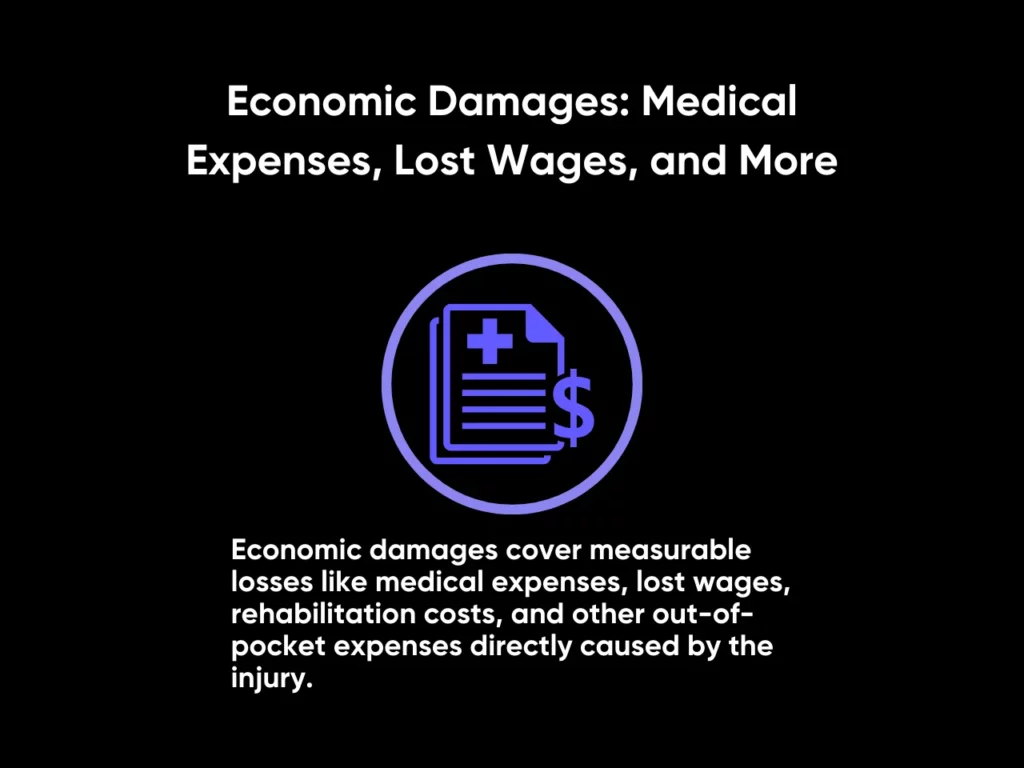Slip and fall accidents are among the most common personal injury cases in the United States and a leading cause of ER visits. When individuals get injured due to unsafe conditions, they can sue the negligent party. Victims of minor injuries like bruises to severe ones like fractures or head trauma can seek compensation through slip and fall settlements.
At Sparrow, we specialize in helping eligible class members claim compensation from settlements, whether it be labor-related, such as unpaid wage cases, or long-standing litigations on commodity price fixing, such as the pork settlement. With our platform and expertise, we make the settlement process as smooth as possible, from class action discovery to filing claims and receiving a settlement payout.
Using our experience in streamlining the settlement claims process, we’ve written this guide to cover key aspects of slip and fall cases. We will discuss the legal framework involved in this type of personal injury claim, its typical causes, and factors that affect the subsequent settlement amounts. Additionally, we will discuss the types of damages involved in slip and fall settlement payouts and how they can apply to your particular case.
Let’s get started.
Understanding Slip and Fall Cases in the United States
Slip and fall accidents are one of the leading causes of personal injury claims in the United States, with approximately 1 million people being admitted to the hospital due to such accidents. But slip and fall settlements aren’t just reserved for accidents on wet floors. Let’s find out more below.
Definition and Legal Framework of Slip and Fall Incidents

The term “slip and fall accident” is often used as a blanket term to refer to any incident in which someone gets injured on someone else’s property. As long as the person is not trespassing and the owner is aware of or directly responsible for their presence, they are effectively under the owner’s care.
These cases fall under premises liability law, which is predicated on a property owner’s duty of care. Duty of care is a legal obligation that holds property owners responsible for the safety of visitors and occupants. The concept of duty of care also extends to managers and tenants and establishes the expectation to take reasonable measures to prevent hazards that could cause slip and fall accidents.
Common Causes of Slip and Fall Accidents
Slip and fall accidents can result from virtually any hazard that can cause one to lose footing or balance. Common examples of such hazards include:

- Wet or uneven floors
- Poor lighting
- Icy or wet conditions
- Loose carpeting
- Obstructions in walkways
Property owners are expected to take reasonable care to prevent hazards, or at least warn people that they exist. What legally constitutes reasonable measures can depend on the particular situation. But in general, fixing slippery surfaces, ensuring adequate lighting, and addressing structural problems are expected of all property owners, managers, tenants, and any other individual with a duty of care over the premises.
Hazardous conditions are sometimes unavoidable, such as in areas with frequent grease spills, loose surfaces, or slippery ice. In these cases, those with duty of care over the area must put up warning signs. Failing to do so is another form of negligence.
Legal Standards for Proving Fault in Slip and Fall Cases
Winning a slip and fall lawsuit involves proving negligence by demonstrating that the property owner was aware of the dangerous condition, or at least was obligated to know about it under duty of care. Courts will then evaluate whether the owner took reasonable steps to prevent that hazard.
Key Factors Influencing Slip and Fall Settlements
Various factors can decide the outcomes of slip and fall settlements. These include how severe the injury was, how gross the defendant’s negligence has been, and any tactics insurance companies can employ to minimize the amount they have to pay out. Let’s explore how they affect slip and fall cases’ settlement amounts.

Severity of Injuries and Their Impact on Settlements
The severity of the injuries sustained in a slip and fall accident is the primary deciding factor in the compensation amount. Cases involving serious injuries like fractures, head trauma, or long-term disabilities generally result in higher payouts due to medical bills and lost wages.
In one notable slip and fall settlement, a woman received $10 million after suffering a traumatic brain injury from a fall in a department store. Individuals who have suffered severe injuries after a slip and fall accident must be able to produce medical documentation, expert testimony, and other evidence of long-term effects to receive the maximum eligible slip and fall settlement amount.
The Role of Negligence and Liability in Determining Settlement Amounts

Proving negligence is vital to getting maximum compensation in slip and fall lawsuits. If the courts decide that there is only partial or even absent negligence, plaintiffs may receive minimal compensation at best.
There are also some cases in which the fall victim shares responsibility for the accident, such as if a victim was texting while walking and failed to notice a spill that they otherwise should have if they were reasonably attentive. This is called comparative negligence and can also reduce the settlement amount.
The Influence of Insurance Companies and Negotiation Tactics
Insurance companies also influence slip and fall settlements as they cover the compensation under the defendant’s homeowners or business liability insurance policy. They seek to minimize payouts by disputing claims and sometimes offering low initial settlements.
An experienced attorney can counter these tactics with aggressive negotiations or taking the case to court when necessary. The effectiveness of your legal counsel in countering the insurance companies’ tactics will be a key factor in determining the final settlement.
Calculating Damages in Slip and Fall Cases
Damages in a slip and fall lawsuit are divided into three categories: economic, non-economic, and punitive. Understanding how these categories apply to your particular case is essential to setting your expectations for your slip and fall case’s settlement amounts.
Economic Damages: Medical Expenses, Lost Wages, and More

Economic damages cover measurable losses, including medical expenses, lost wages, rehabilitation costs, and any other out-of-pocket expenses directly caused by the injury. The compensation for these is determined using evidence such as medical bills and expert analysis, along with projections for future care costs. For instance, a slip and fall case where the victim requires surgery and physical therapy would lead to extensive medical expenses and, thus, higher compensation.
Non-Economic Damages: Pain and Suffering, Emotional Distress
Non-economic damages include compensation for intangible losses. Intangible losses are those that reduce quality of life and create negative conditions such as physical pain, emotional distress, and suffering. Since the extent of these is not strictly quantifiable, courts often calculate damages using multipliers based on the severity of the injury. This involves multiplying your economic damages by a number ranging from 1.5 to 5, depending on the severity and permanence of your injury, to determine how much you get in non-economic damages.
Another method is the “per diem” or “per day” where the court seeks medical counsel to project how long you have had to and will have to live with pain and award you with a flat amount for each past and future day of work that you will potentially lose because of that pain. Often, the per diem rate amounts to a day’s wages.
Punitive Damages and When They Apply

Punitive damages are rarely applied – only in cases of gross negligence or reckless behavior by the defendant. They are intended to punish the defendant and deter the defendant from committing similar misconduct in the future. They also serve to make an example of the defendant.
Punitive damages are often applied to defendants with hefty responsibilities, such as landlords. Willful neglect from a landlord, such as failing to resolve slippery floors or uneven walkways despite numerous requests, can result in punitive damages being awarded to the plaintiff to compel the defendant to correct their behavior and warn other landlords to avoid following suit and do proper preventive maintenance.
Key Takeaway
Slip and fall accidents can lead to life-altering injuries that can hamper one’s ability to make a living, but fortunately, the vast majority of these cases result in slip and fall settlements. The amount you can receive depends on factors such as the severity of your injury, the negligence of the individual with the duty of care over the premises, and the efficacy of your legal representation when countering insurance company tactics.
If you were injured on someone else’s property and intend to file a slip and fall lawsuit, first make sure they have a duty of care over the premises. You also must not be trespassing, and the individual with duty of care must have provably neglected to take reasonable measures to prevent such injuries.
Have you and a large group of others fallen victim to slip and fall accidents due to a property owner’s negligence? You could be entitled to compensation from a class action settlement. Get started with Sparrow today to stay on top of personal injury class actions and any eligible class action lawsuits. We can help you through the entire process, from class action discovery to getting compensation and navigating the risks of joining class actions on your behalf.


